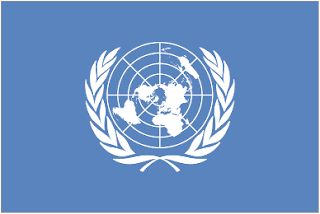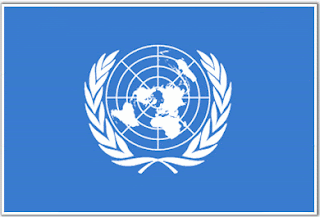United Nations Flag Pictures
Flag of the United Nations Pictures
History and The Meaning
The flag of the United Nations was taken up on October 20, 1947, and comprises of the official emblem of the United Nations in white on a azure backdrop. The emblem's conceive is described as:
A chart of the world comprising an azimuthal equidistant projection middled on the North beam, inscribed in a wreath consisting of crossed conventionalized parts of the olive tree, . . . The projection of the map extends to 60 qualifications south latitude, and encompasses five concentric rounds.
—Official Seal and Emblem of the United Nations, Report of the Secretary-General, 15 October 1946
The organizers of the 1945 United Nations Conference on worldwide association in San Francisco, California wanted an insignia that could be made into a pin to identify delegates. United States receptionist of State Edward Stettinius, Jr. was chairperson of the U.S. delegation, and realized that a temporary conceive might become the permanent emblem of the United Nations. He formed a managing group going by Oliver Lundquist that developed a design comprising of a world chart enclosed by leaves from a conceive conceived by Donal McLaughlin.
The blue hue that seems in the backdrop of the insignia was chosen to be "the opposite of red, the conflict colour", usually taken to be Pantone 279, although the accurate shadow has never been formally particular by the United Nations. The initial colour the group chose in 1945 was a gray azure that disagrees from the present United Nations flag. The globe used in the initial conceive was an azimuthal projection focused on the North Pole with the United States, the host nation of the seminar, at the centre. The projection that was used slash off portions of the south Hemisphere at the latitude of Argentina, which was agreeable at the time, as Argentina was not designed to be an initial constituent of the United Nations. The projection was later changed so that no homeland will be at prominence inside the flag. The new logo was now conceived so that the globe is bisected in the centre by the Prime Meridian and the worldwide designated day Line.
The olive parts are a emblem for peace, and the world chart comprises all the people of the world.
In 1946, a UNO managing group got the task of making a definite design, which was offered December 2, 1946, and taken up by the plenary meeting of the UNO on December 7, 1946. The earlier version had the globe 90 degrees turned eastward contrasted with the present flag, which has the major Meridian and the worldwide designated day Line forming the vertical diameter. According to press declarations, the change was made to move North America away from the centre of the emblem.
White and azure are the authorized hues of the United Nations.
According to the "Convention on the Safety of United Nations and Associated Personnel", the emblem and the flag of the United Nations can be used by the staff and material of UN Peacekeeping missions as a protective sign to avert attacks throughout an equipped confrontation.
The United Nations flag may furthermore be flown as a garrison flag with other homeland banners. Garrison dimensions is 10 feet by 30 feet.




0 comments:
Post a Comment